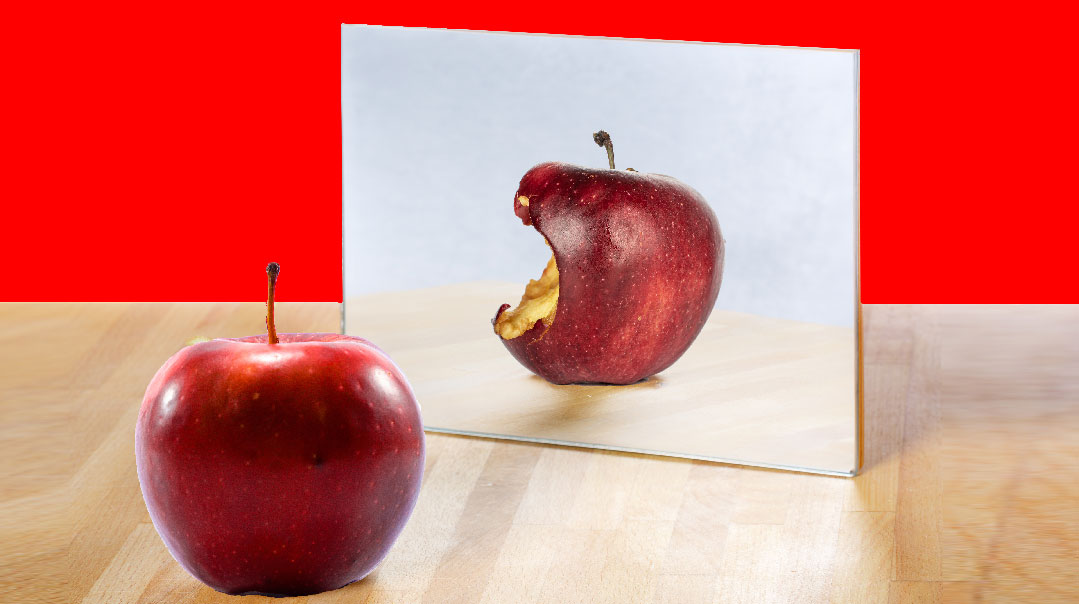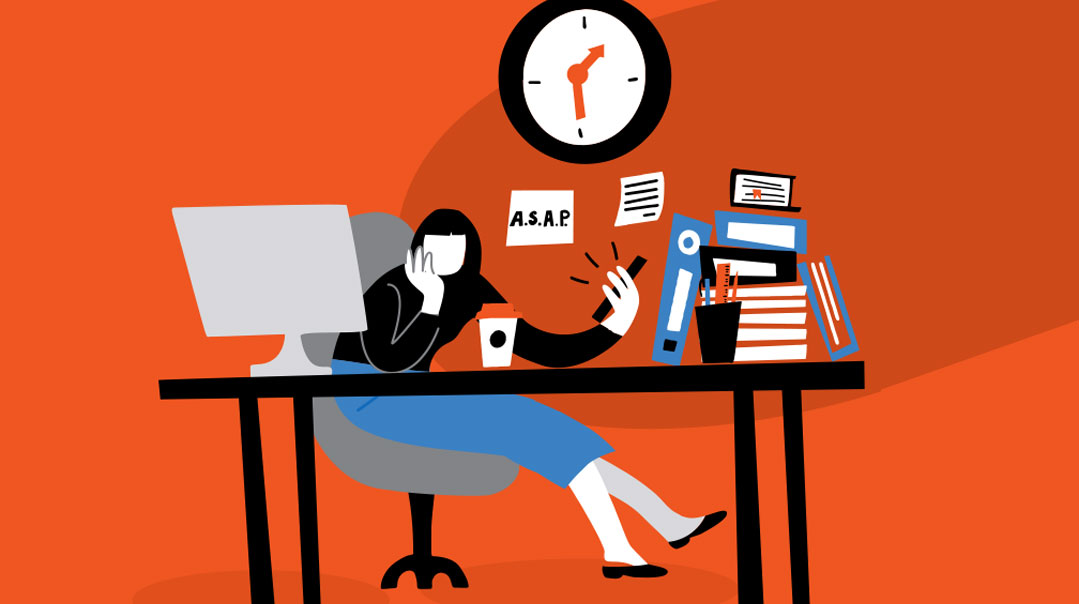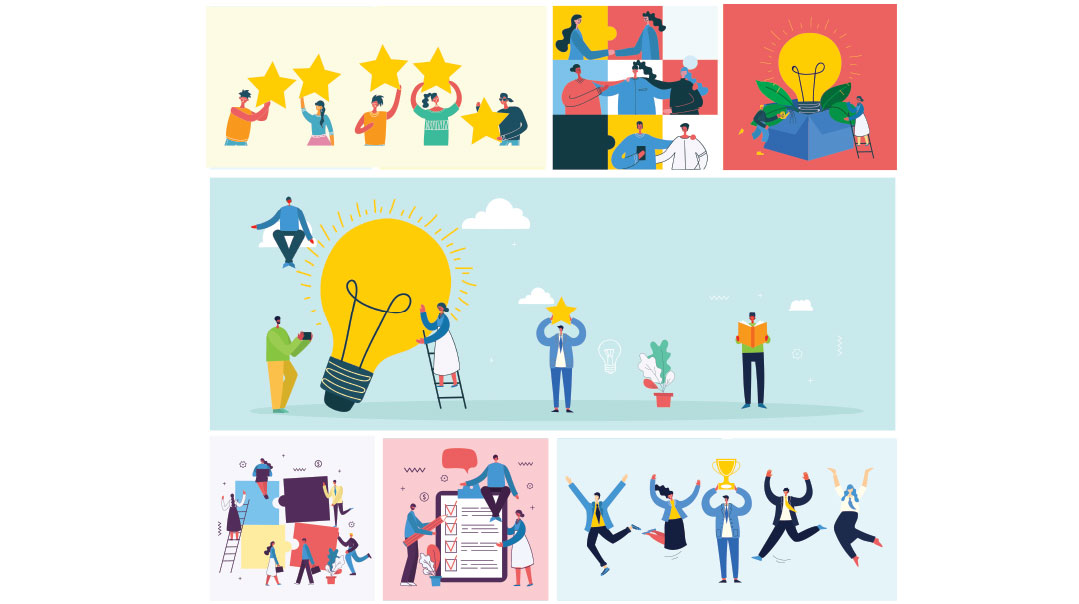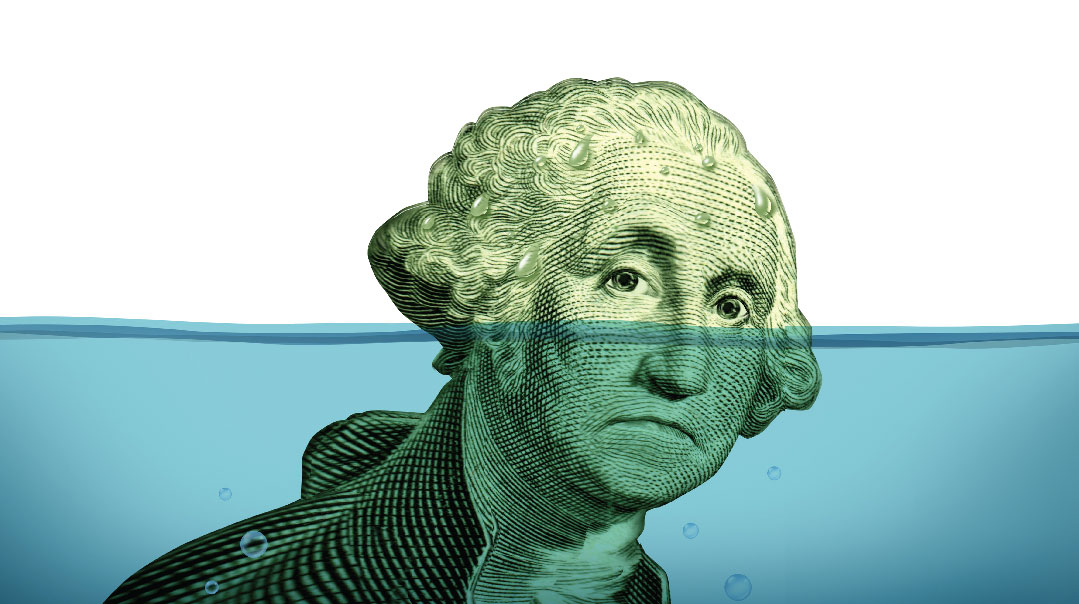Medical or Magic

Could complimentary and alternative medicine involve Torah prohibitions against sorcery, divination, and avodah zarah?
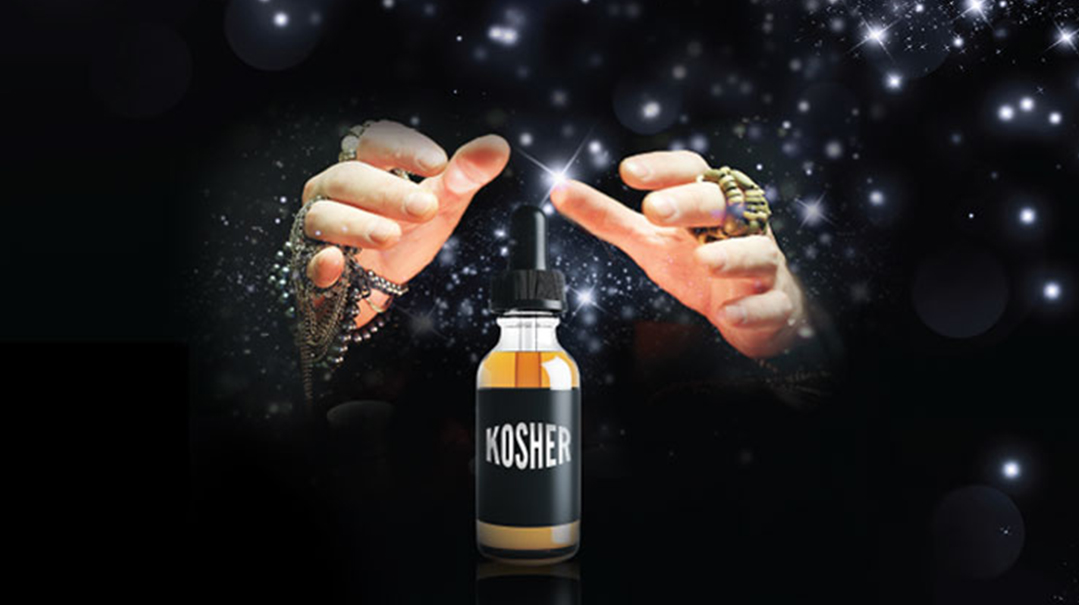
B ack in 2005 Rav Rephoel Szmerla of Lakewood decided to write a short kuntrus on the halachic permissibility of various types of alternative healing. In the end what he thought would be a six-month project took him a decade of intense examination: Do these practices utilize some yet undiscovered law of nature or do they harness a spiritual energy that could involve transgressions of sorcery and avodah zarah?
Day after day three-year-old Chaya’s behavior deteriorated leaving her parents who live in the Jerusalem suburb of Beitar beside themselves with grief exhaustion and worry. Whenever they tried to dress or bathe her she would go into hysterical fits that would last for hours. And although they made the medical rounds no doctor could find anything wrong with her physically or psychologically.
Finally after much urging from friends they finally decided to see an alternative practitioner specializing in health kinesiology. He tested Chaya’s muscles for signs of weakness while touching her with vials containing various foods and minerals. After testing dozens of samples he turned to Chaya’s anxious parents with a smile. “Your daughter is allergic to the laundry detergent you’ve been using.” They immediately switched laundry detergents and her tantrums subsided completely.
Most readers know someone who swears by at least some form of alternative healing — known collectively as CAM (complimentary and alternative medicine). These practices consist of a wide array of modalities that include such practices as homeopathy acupuncture reflexology kinesiology tapping and EFT acupressure dowsing flower essences geobiology hypnotherapy yoga Reiki TAT and feng shui (harmonizing your body not your home decor) to name a few.
Some techniques such as acupuncture date back thousands of years while others such as applied kinesiology are just 50 years old or less. According to the National Institute of Health 38 percent of Americans spend $33.9 billion out-of-pocket every year on CAM products and practitioners. Over the past 20 years the NIH’s National Center for Complimentary and Integrative Health has spent tremendous resources to research the effectiveness of countless non-conventional medical treatments.
While some practices such as acupuncture have been proven to work well in certain conditions others such as energy healing have not been verified. But that hasn’t stopped millions of people from continuing to use alternative healing techniques that have not passed the rigors of scientific scrutiny.
This is not a forum for discussing the merits and pitfalls of the various CAM disciplines — people who have had success aren’t really interested in statistics anyway — but one question within the Torah community (which seems to have a special affinity for many of these methods) keeps coming up: Assuming these practices work do they operate utilizing some yet-undiscovered law of nature or do they make use of a supernatural power or spiritual energy? And if this is the case does harnessing those energies involve the Torah transgressions of sorcery divination avodah zarah or other prohibited behaviors since it appears that some of these modalities are rooted in pagan rituals and philosophies?
Keep G-d in the Picture
Two English-language seforim have recently been published in order to answer these very questions. One is Alternative Medicine in Halachah (Israel Bookshop), written by Rav Rephoel Szmerla, the rav of Beis Dovid-Pinewood in Lakewood and a posek on Rav Shlomo Miller’s beis hora’ah in Lakewood, and the other is Shulchan Halevy on Alternative Medicine (Tzuf Publishing), published posthumously based on shiurim by Rav Yisroel Belsky ztz”l.
Rav Szmerla’s sefer is certainly the most comprehensive work written on the topic in modern times — although it has garnered its share of controversy as well. In addition to discussing modern-day practical applications for an assortment of alternative techniques and a comprehensive analysis of their halachic status, Alternative Medicine in Halachah also provides an in-depth 350-page Hebrew section entitled Ki Ani Hashem Rofecha, which discusses opinions of the Rishonim and Acharonim on subjects such as magic, fortune-telling, astrology, necromancy and many other complex halachic and hashkafic topics.
Originally from Paris and a talmid of Gateshead Yeshiva, Rabbi Szmerla came to learn in Lakewood’s BMG over 40 years ago. He himself became acquainted with alternative healing decades ago, when a family member was suffering from chronic sinus infections and inflamed airways, a painful condition that made breathing through the nose impossible. She followed repeated antibiotic treatments and nasal cortisone sprays, without success. One ENT specialist at Columbia Presbyterian Hospital suggested surgery to remove the lining of the nose that was so inflamed. At that point her rav suggested she see a chassidic kinesiologist in Boro Park, who determined through muscle testing which allergies were causing the inflammation, and then was able to eliminate most of them through acupressure. The sinus infections stopped almost overnight and she was able to avoid surgery. When she went back to the ENT a year later, he looked into her nostrils and then looked back incredulously at the notes he had written a year before. He couldn’t believe how the inflammation had gone down.
“I don’t know what you’ve been doing, but keep doing it,” the doctor told her. That was over 25 years ago, and she hasn’t had a sinus infection since.
In 2005, Rav Szmerla decided to write a short kuntrus on the topic in order to present the sugya to some of the gedolim. “I saw that this was an area of halachah in which many rabbanim were ignorant, not regarding the halachic dimension as much as the metzius — the actual facts of alternative methods,” he says. “Since I had knowledge in the field, I felt that I had a moral obligation to investigate it fully. I figured it would take maybe half a year — but it ended up taking over a decade. There is a huge wealth of information in the Rishonim and Acharonim. The topic had never really been examined so intensely in modern times and in light of modern alternative methods.”
Rav Szmerla went on to present his findings to a panel of leading poskim in Eretz Yisrael, including Rav Mordechai Gross (author of Shiurei Shevet Halevi) and his beis din, who were appointed by Rav Elyashiv ztz”l to investigate the matter. His sefer was also reviewed by Rav Moshe Sternbuch, Rav Shmuel Kamenetsky, Rav Shmuel Fuerst, and several others.
Some of Rav Szmerla’s critics accuse him of being anti conventional medicine, although he writes specifically in the introduction that the goal of the sefer is to “clarify the halachic status of various alternative therapies, not to encourage people to discount conventional medicine… In the case of a serious condition, one should seek rabbinic guidance before pursuing alternative therapies in lieu of conventional care.”
The most serious halachic issues to be weighed when considering any type of alternative medicine are: Kishuf (sorcery) — does the technique utilize magic or demons? Darchei ha’emori (the way of the gentiles) — is one participating in irrational and ineffective actions that may have roots in non-Jewish superstitions or idolatrous rituals? Avodah zarah (idolatry) — is the actual practice a form of idol worship? Kisum and nichush (fortune telling and omens) — is the behavior based upon irrational beliefs, or does it have a logical explanation? And tamim tihyeh (telling the future) — is the practice attempting to discern future events? Another important consideration: Are there any known dangers involved with particular techniques, and may those techniques be used in life-threatening situations instead of clinically proven methods?
Regarding this last point, Rav Moshe Heinemann, rabbinic supervisor of the Star-K and mara d’asra of Agudath Israel of Baltimore, told Mishpacha a story about a woman diagnosed with cancer in the 1970s. She was adamant against getting chemotherapy and instead preferred to receive a form of alternative therapy that was popular at the time. Rav Heinemann sent her to Rav Moshe Feinstein ztz”l, who paskened that she was obligated to listen to the leading doctors of the time and undergo chemotherapy. The treatment was successful and she enjoyed several more decades of health with her family. Rav Heinemann thus determines that one is obliged to abide by the findings of clinical studies in the case of life-threatening illness. When dealing with a potentially life-threatening issue, the first and foremost concern should always be finding the approach that is proven to be most effective at preserving life.
Although Rav Szmerla points out various halachic pitfalls in certain alternative techniques, he also emphasizes the danger of relying solely on western medicine.
“Every approach can be used properly or be abused,” he told Mishpacha. “There is a place and need for both conventional and alternative medicine. You need to use your seichel, your intellect. It is a terrible tragedy when people use alternative medicine when they should really use conventional medicine. Hands-on healing will not cure cancer. It just won’t. However, other times, people use powerful invasive drugs or surgeries when they can be easily cured by alternative medicine without any side effects.”
Although Rav Szmerla brings the opinions of numerous contemporary gedolim who permit many forms of alternative medicine under certain conditions, other leading rabbanim disagree with some or many of these conclusions. Most notable among the dissenting opinions are that of Rav Belsky, brought in Shulchan Halevy on Alternative Medicine, and Rav Dovid Morgenstern, one of the foremost disciples of Rav Elyashiv, who feel that certain forms of alternative medicine are problematic for a variety of reasons including avodah zarah, kishuf, nichush, and darchei ha’emori.
Based upon the differences of opinion regarding some of these practices among the modern-day poskim, it’s worthwhile to ask one’s own halachic authority before considering certain forms of alternative medicine. Even in cases when relying on alternative practices is permitted, caution should be used to avoid being influenced by the philosophical or spiritual underpinnings of many techniques that are rooted in Asian, Shamanistic, or New Age ideologies.
Does it Work?
Although he himself is of the opinion that many alternative techniques do have validity, Rav Szmerla isn’t out to prove the successes or failures of the various techniques, but rather to clarify their status, especially when so many people today are on a lifelong search for better health and a way to treat those myriad elusive symptoms.
Since her teens, Tziporah has suffered from fatigue, irritability, stomach problems, chronic headaches, neck and shoulder pain, as well as depression and anxiety. After years of trying to fix her health, “walking around in the dark trying to figure out why I felt so bad,” she eventually ended up at a chiropractor who also practiced applied kinesiology and energy healing.
“At the time I had no idea what energy healing was and I just wanted her to make my headaches go away,” Tziporah recalls. Through muscle testing, the chiropractor told her that she was intolerant to wheat, corn, and peanuts. She also told her that she had emotional blockages that were negatively contributing to her health.
“I went to her several times and she did some emotional-release techniques to help clear away some old emotional baggage. At first, I was really skeptical that any of this was making a difference and I continued going only because I still needed a chiropractor for my neck. However, after a few months I began to notice that I felt so much better in a few different areas and was functioning in a way I had not been able to previously. The majority of my stomach problems had been resolved, I had more stamina and strength, my depression and anxiety were greatly improved, and I also had more emotional energy and patience. I know that many people think energy work is weird, creepy, strange, and complete nonsense, but I believe that it works because it definitely worked for me.”
Another woman in Lakewood reported that she’d had been suffering for many months with a 6mm stone in her salivary gland that blocked saliva flow and was easily infected. She saw a salivary specialist who told her that a stone of this size would require a two-to-three hour surgery under general anesthesia, with risk of permanent nerve damage.
“He very clearly told me that there was no way for the stone to get smaller or go away on its own,” she recalls. “He said ‘I can wait to do surgery but that stone isn’t going anywhere.’ So what did I have to lose? I decided to give alternative medicine a try.” After five sessions of Health Kinesiology, the stone not only shrank in size and moved to a less painful location closer to the duct of the gland but an actual piece popped out from under her tongue.
But for all the positive experiences, there are many disappointments as well. One family from Ramat Beit Shemesh took their son to a chiropractor who also practices energy healing, after their son experienced a concussion while playing soccer. He started experiencing intense anxiety that they thought might be attributed to the head trauma — known as post-concussion syndrome.
“Conventional therapy had been largely ineffective, so we decided to see this alternative practitioner who had been highly recommended,” the father recalled. “She performed a series of cranial-sacral adjustments during a few sessions and then declared that the effects of the head trauma were completely gone and that he should be back to normal. Unfortunately his anxiety symptoms came right back the next day and only went away when we discovered that they were caused by a completely unrelated medical condition. Was she bluffing or not? I can’t tell you. Maybe she did relieve his head trauma — but that had nothing to do with his anxiety.”
On top of that, some people have had disastrous experiences with alternative treatments, resulting in the loss of thousands of dollars, and in some cases, life. When Etan Greenberg’s mother was diagnosed with cancer at age 50, she did everything to avoid conventional chemotherapy. She went to acupuncturists, macrobiotic nutritionists, and energy healers in addition to agreeing to the least aggressive forms of radiation therapy. In the end, she lost the battle to cancer four years later. In one session with an old Chinese acupuncturist in Queens, NY, the practitioner admitted to Mr. Greenberg that there was nothing he could to help her. “We have to give her hope, don’t we?” he told the surprised son.
“He basically admitted that he was taking our money and time just to make her feel good,” Greenberg recalls. “There is merit to giving hope to a dying patient but perhaps if she had known it was useless she would have put more money and energy into conventional methods.”
Greenberg’s mother had two friends her age who were both diagnosed with the same disease around the same time as her diagnosis. “I often ask myself what would have happened had she just done the normal chemo treatment,” he admits. “Her two friends both did regular chemotherapy, and they’re both alive today, nearly 20 years later. Look, I believe that Hashem runs the world and it was clearly her time to go. But I can’t stop myself from asking if she might have been alive to dance at my chasunah or my first son’s bris had she done things differently.”
Dr. Mark (Menachem) Young, a member of the Baltimore frum community, is a board-certified specialist in physical medicine and rehabilitation (physiatry) and is also a registered medical acupuncturist. Dr. Young currently serves as Chairman of the Department of Physical Medicine and Rehabilitation at the Maryland Rehabilitation Center, is on the faculty of Johns Hopkins School of Medicine, and serves on the editorial board and is the past editor-in-chief of the Journal of Practical Pain Management. His clinic utilizes a number of techniques that range from conventional to alternative.
“I prefer not to call it alternative medicine. Instead we call it complementary or integrative medicine — it’s not an alternative to conventional medicine, but it is a useful complement. I try to combine the best of Eastern techniques with Western interventions. It’s extremely dangerous to view these as a substitute, but it’s like a smorgasbord — when you combine a little of this and a little of that, you get a balanced nutritious meal that positively impacts wellness.”
He describes how he expanded his knowledge to eventually include acupuncture, nutrition, and other so-called complementary practices to assist his patients with pain management, back pain, arthritis, and muscle spasms. “I wanted to go beyond the pill-and-poke approach of modern medicine to be able to help my patients by offering a holistic approach to heal both mind and body,” he explained. “We know from the Rambam the importance of a balanced approach to health and lifestyle. Physicians will tell you that nutrition is often one of the most under-taught and overlooked areas in medical school. For many years there was a large degree of skepticism but some of what was once considered quackery is now considered legitimate complementary medicine. Even Harvard Medical School teaches acupuncture now.”
He explains that the Western approach to medicine is often based upon treating the symptoms through medication, or cutting out the problem through surgery. Eastern medicine, on the other hand, focuses on treating the whole person by addressing the root cause, and attempting to help the body heal itself. “Studies have shown that Eastern medicine, nutrition, herbal remedies, meditation, mindfulness, and breathing techniques are all helpful in relieving pain, but not necessarily in abolishing disease. If a person has cancer, chas v’shalom, he needs chemo — but acupuncture can be helpful in increasing appetite and decreasing nausea and other debilitating side effects.”
There are various theories to explain how acupuncture works to minimize pain — either by triggering endorphin release, by stimulating large nerve fibers to inhibit pain signals, or by calming the body’s stress response system. “There’s an Eastern explanation and a Western one,” Dr. Young explains. “But everything needs to be verified with real data. A dose of skepticism is healthy as long as it doesn’t deprive patients of important modalities that can help them. We need to have scientific support for everything we do, but there are anecdotal successes that may have validity even though they have not yet passed the rigor of scientific clinical trials — as long as we aren’t causing harm or preventing the patient from pursuing proven methods. It’s gratifying to know that frum doctors are accepting of different complementary modalities — after all, the Gemara brings many diverse methods of healing.”
Not every physician shares such a generous perspective, though. Dr. Michael Oshinsky, also a member of Baltimore’s kehillah and the NIH program director of Pain and Migraine research in the National Institute of Neurological Disorders and Stroke, says if it can’t be duplicated consistently in a clinical trial, it’s unlikely that it works any better than the placebo effect.
“Science uses data that manifest in the physical reality,” he explains. “Even if we don’t know how it works, we can measure the effects on the patients. Anything we don’t have data for, we say we don’t have conclusive evidence for either way. According to my evaluation of the literature, the vast majority of alternative medical treatments for most conditions are not proven to be effective. There may be some treatments that work for some patients with some conditions but it is not at all conclusive and we don’t know if it is even better than the placebo effect.”
Dr. Oshinksy denies, however, that there is a bias in the scientific community against alternative medicine. “The NIH’s National Center for Complimentary and Integrative Health spends millions of dollars a year to design proper clinical trials to uncover evidence for alternative methods. So far they haven’t found anything that is very conclusive. Real scientists don’t have an agenda. Philosophers take the evidence that scientists gather and draw conclusions about the implications of what the data means.”
Rav Szmerla, however, says it’s not so much about science per se, but the influence that Western thinking and values play on our decisions. He refers to the Ramban in Parshas Acharei Mos (16:8), who talks about “those who claim to be knowledgeable in natural sciences, followers of the Greek [Aristotle], who denied anything he could not perceive with his senses and who arrogantly thought… that anything he could not perceive with his intellect is not true.”
“We find that Chazal permitted many segulos that are completely beyond our comprehension and do not have scientific explanation,” Rav Szmerla explains. “Claiming that any inexplicable therapy is forbidden is not only halachically incorrect, it is also a form of kefirah, for it presumes that only what is understood by man could be the handiwork of Hashem, as if man’s understanding is on par with Hashem’s wisdom. Sadly, this heresy, which originates in Western culture, has influenced our thinking as well. In truth, Chazal teach us that just as Hashem is infinite, so too His wisdom and the depths of His creation are infinite. I am not telling anyone to turn their back on conventional medicine — science shows a piece of the puzzle, just not the full picture. Scientific theories from 100 years ago have now been disproven by modern science. What will happen in the next 100 years? Anyone who thinks modern science has all the answers is naive.”
Healing Hands
Reb Shmuel Dovid Rottenstein, a chassid from Boro Park, was a well-known chazzan and voice teacher. Back in 1992, he ran into a cousin of his at a wedding who was suffering from a nodule on the vocal cord that impacted his ability to speak. His cousin recounted that the doctors recommended doing surgery but that he didn’t want to get “shechted” in his throat. Reb Rottenstein offered to teach his cousin how to speak, despite his condition. “The first thing I learned in vocal studies was how to breathe properly, and I figured this might help alleviate his discomfort,” Rottenstein says. After a few sessions, his voice came back fully and the doctor saw that the nodule was completely gone.
Word soon spread regarding the “miraculous” cure, and a short while later, Rottenstein received a call from Dr. Allen Goldstein, a frum ENT specialist from Queens.
“I have someone with nodules on his vocal chords. Would you be willing to see him in his home in Boro Park if he pays you?”
“Why not?” Rottenstein replied. He was shocked when the doctor told him that this first “patient” was the Bobover Rebbe, Rav Shlomo Halberstam ztz”l. It was a few weeks before Rosh Hashanah, and the Rebbe needed his voice back to daven from the amud and the recovery time after surgery would take longer than that.
“I’ll come whenever the Rebbe wants, no charge!” he replied. Rottenstein proceeded to teach the Rebbe how to breathe using his diaphragm. He held onto the Rebbe’s body to demonstrate. “As I touched him, I suddenly felt a tingling sensation in my hands that I had never felt before,” he recalled. After Simchas Torah, the Rebbe’s gabbai called him and asked him to come in to see the Rebbe again. “He showered me with brachos, telling me that ‘All the tefillos, Torah, and tishim are in your zechus.’ That was the beginning of my journey as a healer.”
From then on, the sensation in his hands continued. Suddenly Rottenstein found himself getting flooded with calls from people with voice issues. He soon realized that most people who came to him suffered from allergies that prevented them from expressing their voices fully, so he went to the local public library to research cures for allergies. He stumbled upon a book on kinesiology called Cure Your Allergies in Minutes. He took out the book and read it cover to cover in a few hours. The book discussed energy healing, pressure-point tapping, and food sensitivities. He immediately tested it out on his wife who had a strange allergy to chocolate. Every time she ate a piece of chocolate she would sneeze. He put a piece of chocolate on her body, and then tapped around on various nerve endings. He then instructed her to eat the chocolate. “I’m still waiting for that sneeze,” he says.
He soon became so busy with people calling him to heal their allergies that he didn’t have time for his voice lessons. He decided to go to the Tosher Rebbe ztz”l to ask what his mission in life was — healing or chazzanus. The Rebbe spoke with him for hours about the various healing techniques to determine if they were halachically permissible. Finally he said, “You used to be a shaliach tzibbur, a messenger of the congregation. Now you are a shaliach d’Rachmana, a messenger of G-d. Put your heart and soul into it and you will be successful.”
Later the rebbe pointed out to him that the roshei teivos of his name, Shmuel Dovid Rottenstein, were the same as Shaliach D’Rachmana. He therefore calls his technique “Shadar (ShD”R) Healing Concept.” Over the past 20 years he has treated thousands of clients and taught over 50 students, some of whom are dayanim and rebbes.
At one point, he was so busy that he taught his wife and daughters as well so they could help him with his client load, but they didn’t have his success. “Obviously it was a gift that the Ribbono Shel Olam gave me personally. If someone has a pilot flame, I can ignite their fire but I can’t teach people to do this unless they are naturally talented.” He attributes his success to attaching himself to tzaddikim. “You can’t go wrong if you attach yourself to tzaddikim,” he says. “When I see someone’s name, I can feel whether or not I will be able to help him. I can’t always be the shaliach to help people, but Hashem gave me this gift and I have to use it as best as I can.”
Alternative Techniques at a Glance
Traditional Alternative Medicine — Traditional Chinese Medicine dates back thousands of years and utilizes a combination of herbs, diet, and acupuncture (insertion of needles in certain points along the body) to restore balance to the body’s natural energy field (known as chi) based on Taoist tradition — an ancient Chinese religious and philosophical system. Similarly, Ayurveda, traditional Indian medicine based on Hindu belief, utilizes herbs, diet, exercise, Yoga, and meditation to bring about balance between mind, body, and spirit. Shamanistic healing refers to rituals involving hallucinogenic plants or invocation of spirits used by indigenous peoples around the world such as the Native Americans, Africans, and Pacific Islanders to heal the sick. Many of the above practices have their roots in idolatry or magic, and therefore a sh’eilah should be asked about each practice separately.
Homeopathy — Developed by a German physician in the early 1800s, homeopathy takes a tiny drop of certain reactive substances that are diluted numerous times in water-based tinctures to cure a variety of emotional or health conditions. It is based on the idea that “like cures like,” whereby a tiny bit of the damaging agent is believed to actually enable the body to heal itself. Some halachic authorities believe that since there is no scientific explanation for homeopathy, it should be forbidden because of darchei ha’emori, although it is widely permitted.
Applied Kinesiology — Beginning in the 1960s, the term kinesiology became associated with a system that attempts to get information about a patient’s health by measuring the response of muscles to certain offending stimuli such as foods, chemicals, or thoughts, and may involve acupressure or other techniques. This system includes Health Kinesiology, One Brain, Touch for Health, and other modalities. Many contemporary poskim permit applied kinesiology, while others are concerned about issues of nichush (omens) and kesimah (divining).
Dowsing — A technique dating back at least as far as the 16th century that observes the movement of an L-shaped rod or pendulum to discover underground water, or more recently, to gain insights into emotional or physical health. Certain rabbanim throughout the centuries have utilized dowsing to obtain answers to particular questions. In recent times, Rav Shimon Anshin z”l would utilize dowsing to determine the location of various graves in Israel and around the world for the Asra Kadisha, under the guidance of leading poskim of the time. There are numerous contemporary rabbanim who personally rely on dowsing today, while other authorities are concerned about issues of nichush and kesimah.
Energy Healing — This refers to a variety of techniques such as hands-on healing, Reiki, therapeutic touch, and other techniques, whereby the practitioner places his/her hands on or near the body of the patient to transfer what is known as auric energy from the healer to the patient. Some believe that energy can also be transmitted long distance through the mind. Several authorities believe that this practice involves issues of avodah zarah and kishuf, whereas others permit it.
Gem Therapy — This technique proposes that certain stones and crystals possess healing powers when worn or placed in the home. Although not necessary related to modern gem therapy, Chazal do discuss the power of various stones such as a stone worn to prevent miscarriages — known as an even tekumah (Shabbos 66b) — and the stones on the Kohein Gadol’s breastplate, which each had their own unique properties, according to many Rishonim. Additionally, according to some literal interpretations, Avraham Avinu wore a precious stone around his neck that would heal anyone who looked at it (Bava Basra 16b).
(Originally featured in Mishpacha Issue 683)
Oops! We could not locate your form.






